Written by: Haroon Shuaib
Posted on: March 05, 2024 |  | 中文
| 中文
Quaid-e-Azam Muhammad Ali Jinnah at the Khyber Agency, April 1948
Khyber Agency, one of the seven Federally Administered Tribal Areas, merged with Khyber Pakhtunkhwa province in 2018, is a natural pass connecting the subcontinent with Afghanistan and Central Asia. One of the 38 administrative districts of the province, Khyber takes its name from the winding Khyber Pass, snaking between snow-covered mountains of Hindu Kush and Sefed Koh ranges, varying in width from 3 to 137 meters. On both sides of this 60 km pass, Khyber district serves as a turnpike from Peshawar all the way to the border town of Torkham. A 45 km railway track, built in 1927, runs through the Pass, crossing 34 tunnels, 92 bridges and culverts to reach Landi Kotal, a major hamlet of the district. Khyber retained its strategic importance as crossroads for trade and military movement, throughout recorded history. From the time of the Aryans to Alexander the Great, and many more who visited the subcontinent from the West, Khyber Pass served as an entry point. The familiar Bab-e-Khyber (Gate of Khyber), an edifice situated West of Peshawar and built in 1963, is a symbol of the Pass.
Khyber borders Afghanistan’s Nangarhar Province to the West, Orakzai District to the South, Kurram District to the Southwest, Peshawar to the East and Mohmand District to the North. Perhaps no other region in the subcontinent is littered as densely with military forts from the colonial era. Pill boxes of the British era forts can be seen at every corner, and even the remnants of an Execution Fort made by Amir Timur, with its slides, is still visible, which once used to be fitted with blades and axes to speed up the execution process. The most famous of these forts, the Jamrud Fort, visible from a distance like an old battleship, was built after the town of Jamrud was lost by the Afghan Durrani Empire to the Sikh Empire of Ranjit Singh in October 1836. Sardar Hari Singh Nalwa, a well-known Sikh general, laid the foundation of the fort on 18th December 1836, and the construction of the fort with its 10 feet thick walls was completed within 54 days.
Home of many Pathan tribes, such as the Afridis, Shinwaris, Mulagoris and Shalmanis, all of whom fiercely resisted the British colonial army’s incursion into their territories. It is not surprising that the British used the region as a military buffer between the more settled mainland and Afghanistan. The Durand line, established in 1893 as a result of a settlement between Mortimer Durand of British India and the Afghan Amir Abdur Rahman Khan, separated Afghanistan from the Indian subcontinent. Highly mobile, tactically astute and sharp shooters, the tribes of Khyber fought well in their terrain. The British were so impressed by the fighting qualities of these Pathan tribes that they went to great lengths to subjugate, cajole and quite often entice these tribes to serve as the first line of defense during the Anglo-Afghan Wars. To aid their military campaigns, the British constructed a road through the pass in 1879, and converted it into a highway during the 1920s. That road is the same that till recent times was used as the main supply route for the NATO forces in Afghanistan.
There is credible evidence that this region has been a hub of bustling civilization for centuries. During the first-ever archaeological survey of Khyber, a team of archaeologists discovered around 110 archaeological sites, including prehistoric rock carvings and paintings in the Jamrud area of the district. Stupas from the Buddhist period were found scattered all over the narrow crags, and many remains and structures were discovered, some even dating back to 30,000 years. The carvings from the prehistoric period inside Lowara Mena Cave, depict hunting scenes and images of ibex and jackals.
Soon after the creation of Pakistan, father of the nation Quaid-e-Azam Mohammad Ali Jinnah, visited Khyber and acknowledged the sacrifices and loyalty of its tribes to the state of Pakistan. He pledged to the tribesmen that their tribal traditions and customs, would be respected. The traditional hujras (places of congregation) and tribal jirgas (councils of elders) that are part of the tribal social fabric continue to this day. The valor, honor, and hospitality of these tribesmen, enshrined in the ancient Pakhtun code of ethics, referred to as Pakhtunwali, is held in great esteem. No visitor or traveler ever departs without feasting on the traditional food of the area: tikka karahi and wareeta (roasted barbecue), patay tikkay (barbecued meat wrapped in fat) and shana chai (green tea). This is the region of the finest Pakhtun scholastic, cultural and educational excellence.
Khyber has produced great sportsmen, singers, artists and literati, including the world-famous athlete Iqbal Shinwari, cricket star Shahid Khan Afridi, Shahenshah-e-Pashto ghazal singing Khayal Mohammad, noted music director, the late Rafiq Shinwari, popular Pashto film heroine of bygone days, Yasmeen Khan, and rubab maestro Bagha-e-Harum. It was in the bazar of Landi Kotal that one of the finest Pakhtun scholars known in recent history and Baba-e-Pashto ghazal, Amir Hamza Khan Shinwari, founded the Da Khyber Adabi Jirga (The Khyber Literary Council) in 1950, which held regular literary sessions. When celebrating weddings, people would usually arrange Pashto mushairas (poetry recitals) and Tank Takore (music concerts), in which local poets and artistes would perform.
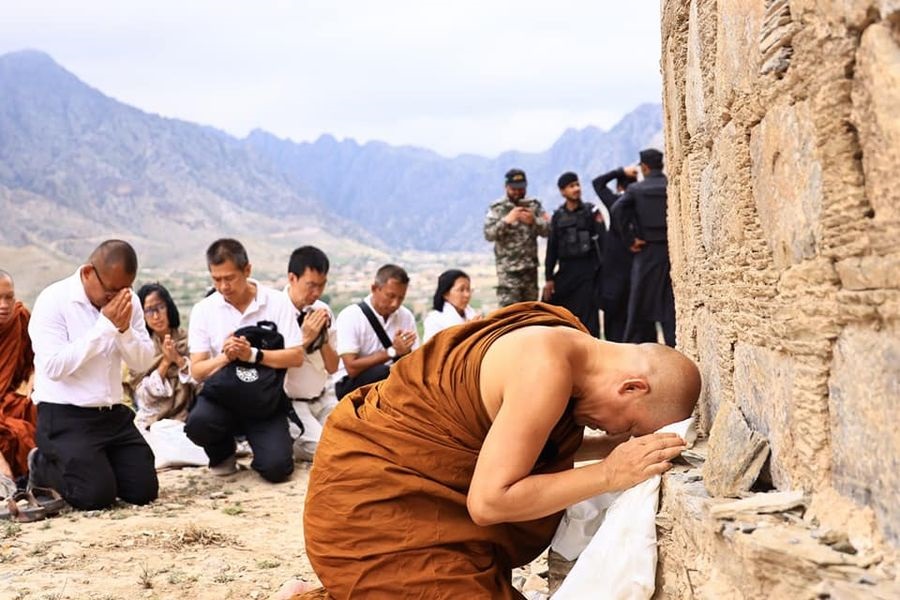
The Cheif Monk of Thailand, MV Father Arayawangso, offering prayers at the ancient Sphola Stupa in the Khyber Pass
With its rich archeological, cultural, historical and political legacy, Khyber has always drawn people from far and wide towards it, despite its difficult terrain and lack of familiarity for the outside world. Shpola Stupa, a Buddhist ruin dating from the second to the fifth centuries AD, stands about 25 kms from Jamrud. The Stupa has a high hemispherical dome resting on a three-tiered square base. Some beautiful Gandharan sculptures were found here when the site was excavated at the beginning of this century. Some of the finds are now in the Peshawar Museum. Besides the Jamrud and Amir Timur’s Forts, other famous forts of Khyber including Shagai Fort, Ali Masjid Fort and Jabba Fort, and military pickets such as the Machni Checkpost are for those interested in military history. The Ali Masjid Fort is named after the Ali Mosque that is situated at the highest point of the Khyber Pass at 3174 feet. According to a local legend, the nephew of the Holy Prophet, who also became his son-in-law and the fourth of the pious Caliphs of Islam, Hazrat Ali, visited this place and prayed here. The mosque is in memory of him. There is a mark of a hand on the wall that the local community considers to be that of Hazrat Ali’s. Above the Ali Masjid, a fortress was built by the British soldiers and also a burial ground, where there are graves of those defense force personnel who died during the Anglo-Afghan war of 1842. Khyber has been visited by world’s most prominent dignitaries like the legendary boxing champion Mohammad Ali, Princess Diana, Shah of Iran, several US presidents, and the British and Japanese Royalty. Natural features such as Kandikotal Waterfall, Tirah Valley and Kabul River are great attractions for nature enthusiasts. It may be worthwhile to consider putting the British era locomotives back on track of a railway line that once wound through the Khyber Pass, and rehabilitating the Khyber Steam Safari, a tourist train which ran from Peshawar to Landi Kotal. The Khyber Steam Safari, was unfortunately shut down in 2007, because of security concerns and lack of resources to maintain the track that can itself be considered an engineering masterpiece of its time.
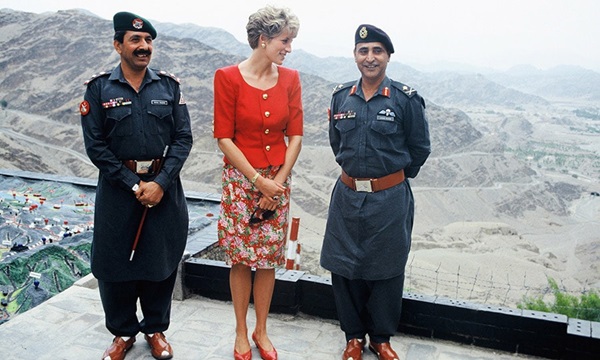
Lady Diana in the Khyber Pass, September 1991
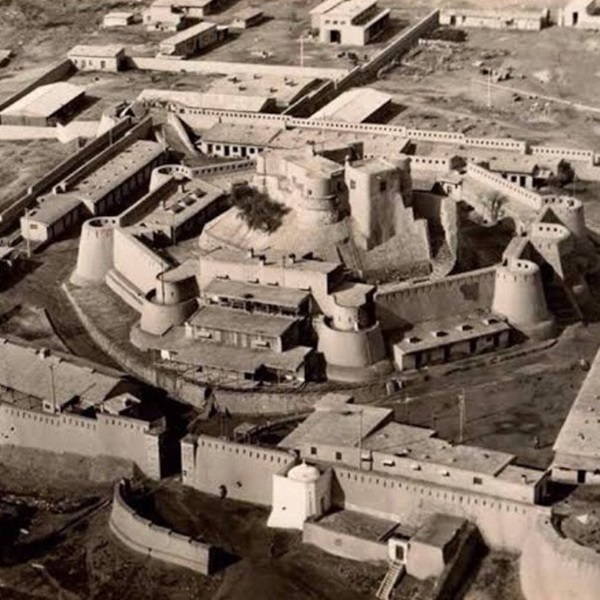
Jamrud Fort
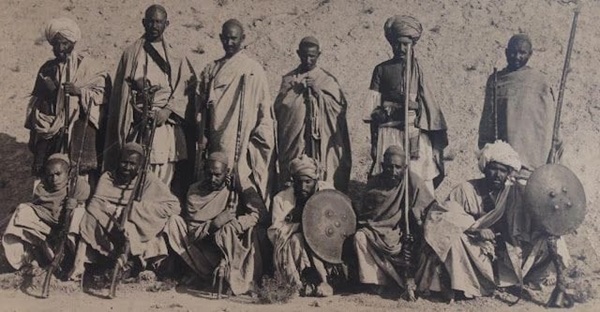
A group of Zakha Khel Afridis, 1905
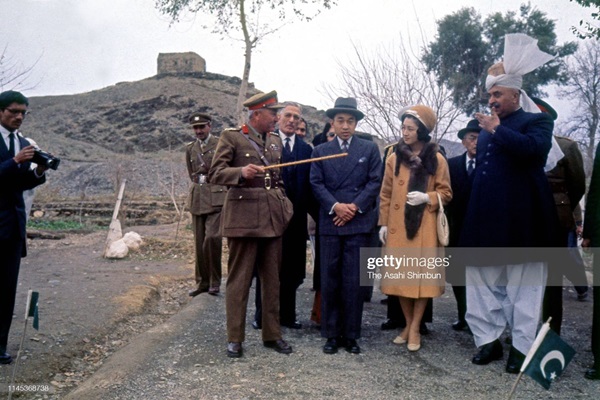
Crown Prince Akihito and Crown Princess Michiko of Japan visited the Khyber Pass on January 25, 1962
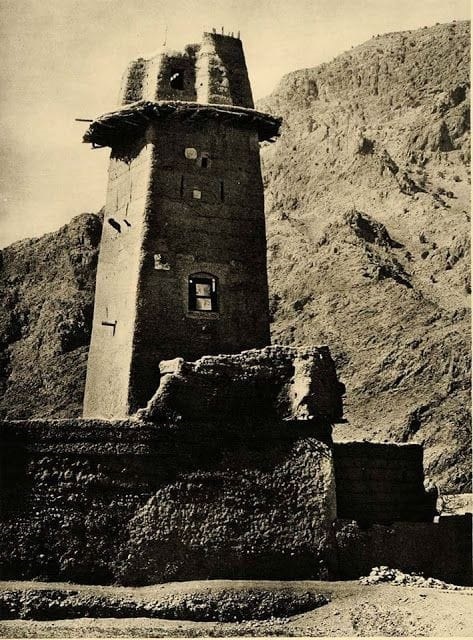
A fortress-like house in an Afridi village, Khyber Pass, 1935
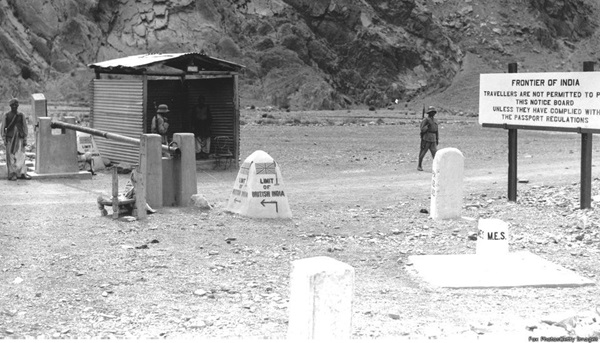
India-Afghanistan border, 13th August 1934
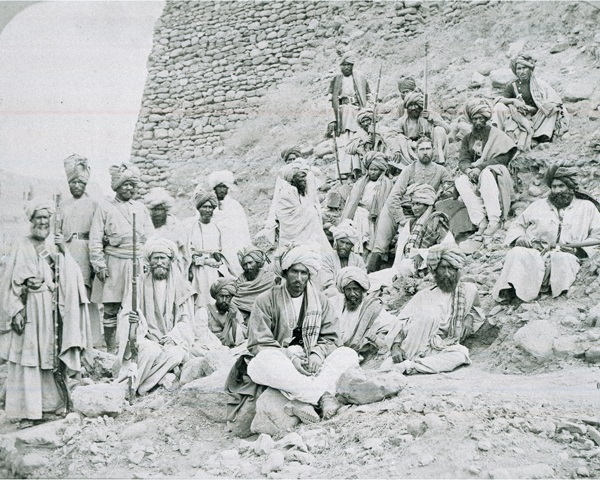
Afridi chiefs, who controlled the Khyber Pass, Jamrud, 1878
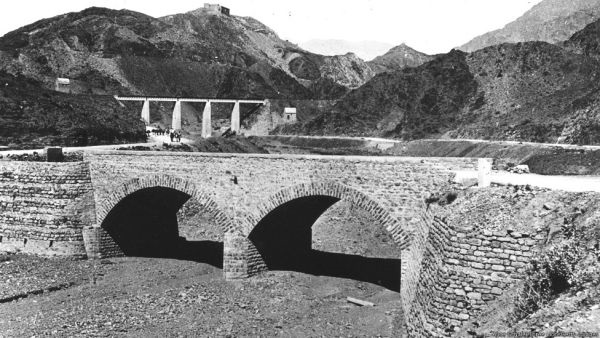
A bridge on Khyber Pass
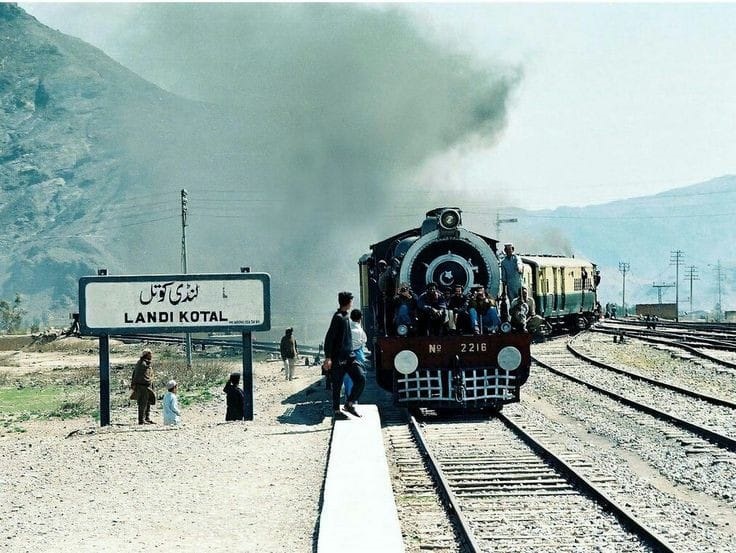
Landi Kotal Railway Station
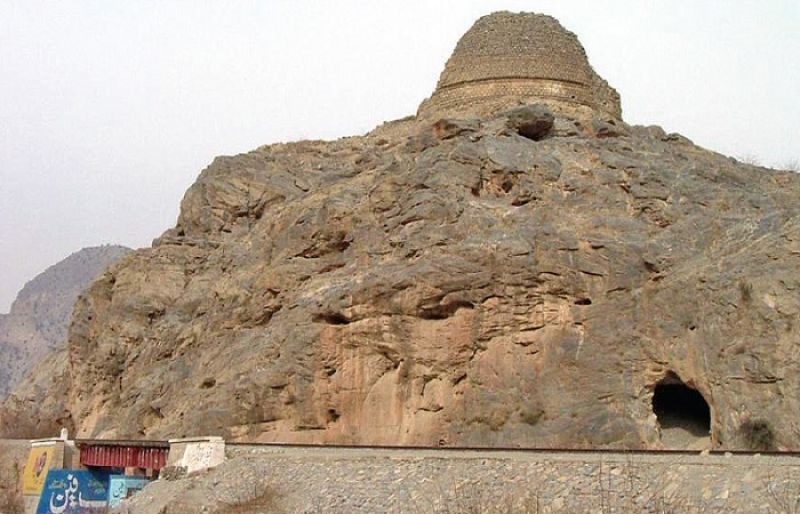
Sphola Stupa in Khyber
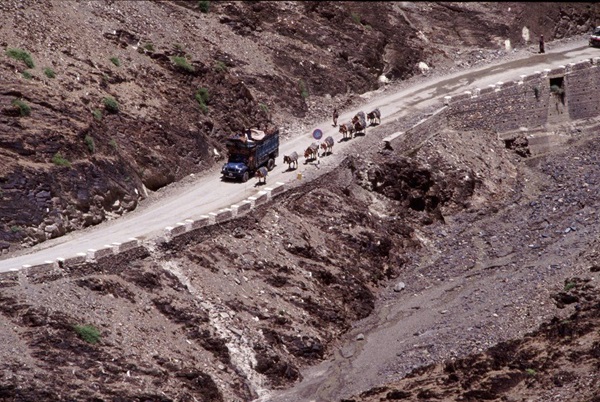
Road to the Khyber Pass
You may also like: